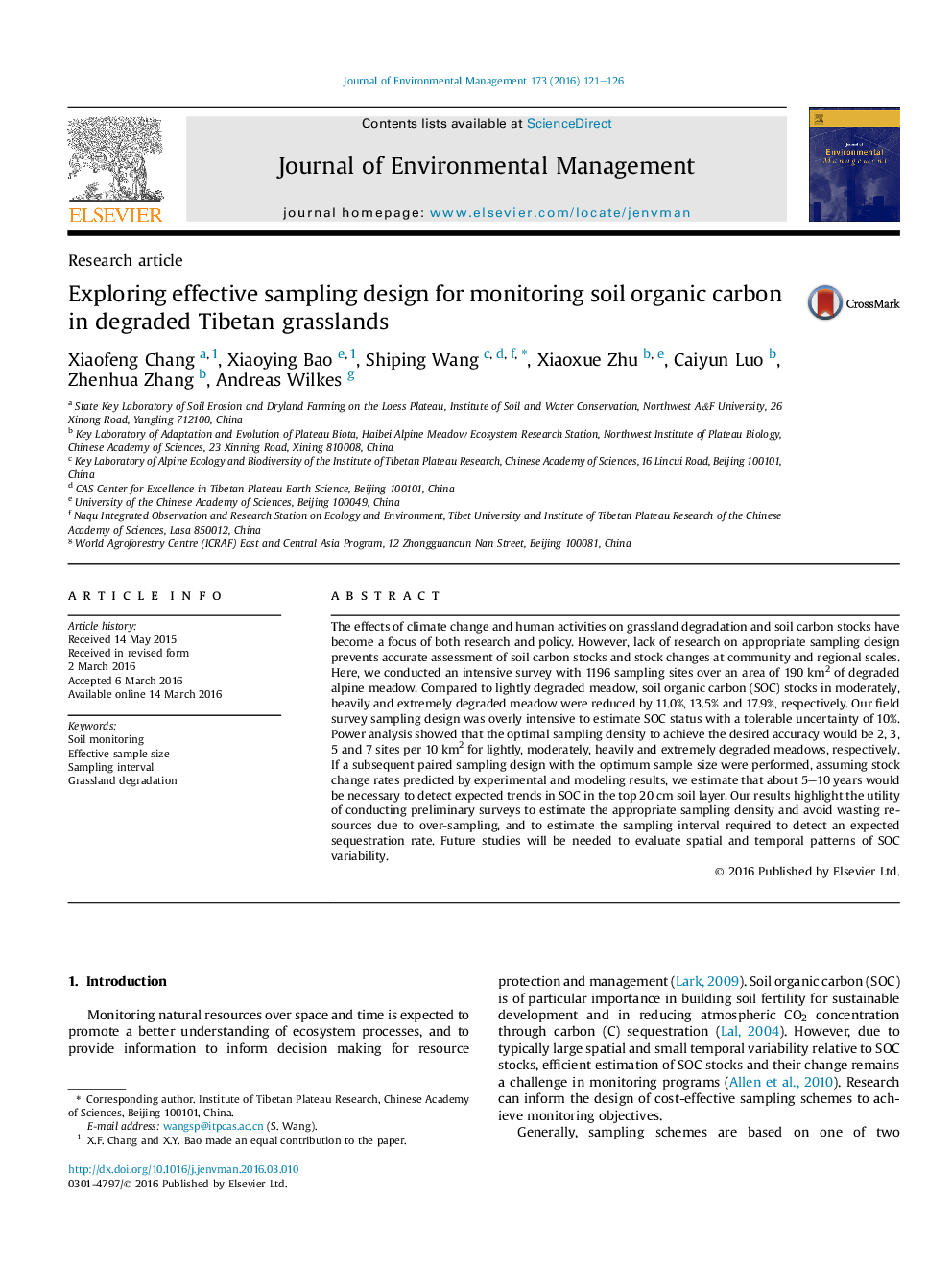| Article ID | Journal | Published Year | Pages | File Type |
|---|---|---|---|---|
| 1055379 | Journal of Environmental Management | 2016 | 6 Pages |
•An intensive sampling stratified by degradation level was conducted to estimate SOC baseline.•The present sample size was about 15 times more than the requirement to obtain an accurate estimate.•Expected SOC sequestration would be detectable after 5–10 yr by a paired sampling.
The effects of climate change and human activities on grassland degradation and soil carbon stocks have become a focus of both research and policy. However, lack of research on appropriate sampling design prevents accurate assessment of soil carbon stocks and stock changes at community and regional scales. Here, we conducted an intensive survey with 1196 sampling sites over an area of 190 km2 of degraded alpine meadow. Compared to lightly degraded meadow, soil organic carbon (SOC) stocks in moderately, heavily and extremely degraded meadow were reduced by 11.0%, 13.5% and 17.9%, respectively. Our field survey sampling design was overly intensive to estimate SOC status with a tolerable uncertainty of 10%. Power analysis showed that the optimal sampling density to achieve the desired accuracy would be 2, 3, 5 and 7 sites per 10 km2 for lightly, moderately, heavily and extremely degraded meadows, respectively. If a subsequent paired sampling design with the optimum sample size were performed, assuming stock change rates predicted by experimental and modeling results, we estimate that about 5–10 years would be necessary to detect expected trends in SOC in the top 20 cm soil layer. Our results highlight the utility of conducting preliminary surveys to estimate the appropriate sampling density and avoid wasting resources due to over-sampling, and to estimate the sampling interval required to detect an expected sequestration rate. Future studies will be needed to evaluate spatial and temporal patterns of SOC variability.
